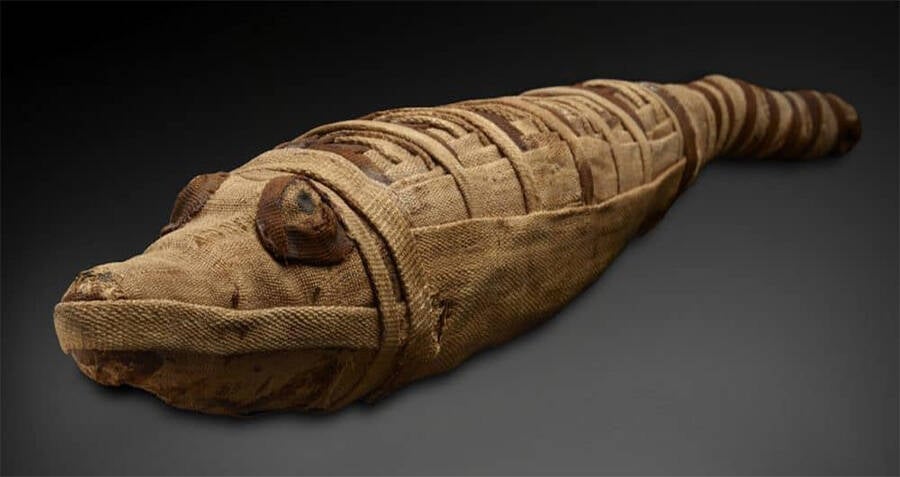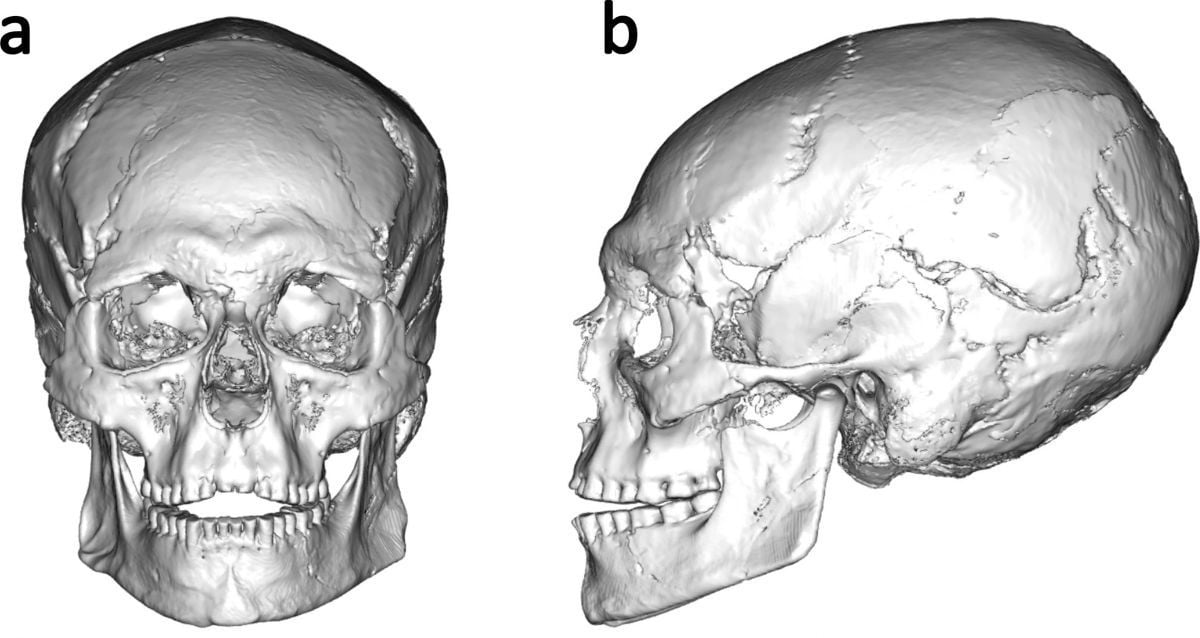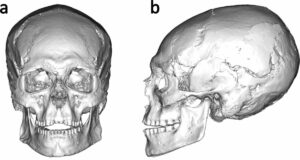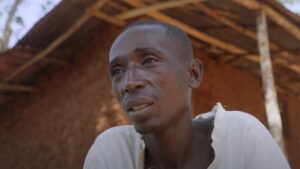“Unveiling Secrets of the Nile: Did Ancient Egyptians Mummify Crocodiles for a Hidden Purpose?”
To determine this, researchers were able to perform a virtual autopsy on the mummified corpse using advanced imaging technology which provided extremely detailed images of each of the mummy’s layers.
They determined that they were dealing with a male juvenile crocodile — likely about three to four years old at the time of its death — with a body length of 3.5 feet.
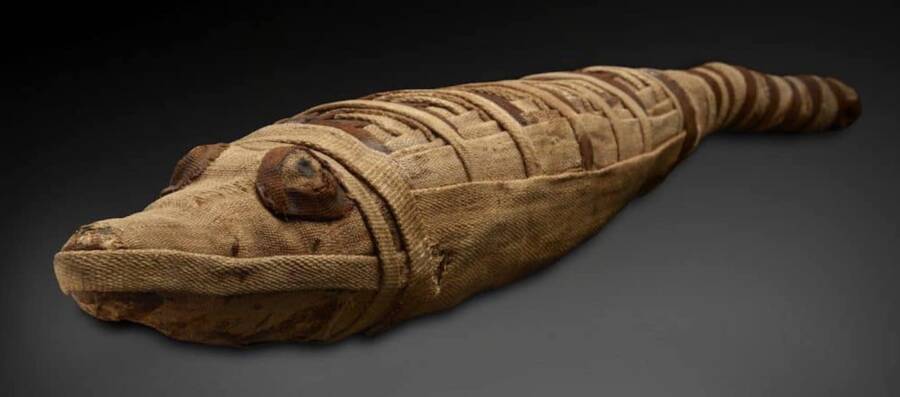
John WeinsteinClose-up of a crocodile mummy.
In addition to crocodiles, the ancient Egyptians mummified millions of animals, including horses, birds, cats, dogs, and others. These various animals were associated with different gods and their mummified corpses were used as votives to communicate with the god they represented.
“There are falcon mummies associated with the god Horus, cat mummies for Bastet, dog mummies for Anubis, ibis mummies for Thoth,” Brooklyn Museum Curator Edward Bleiberg explained to the Washington Post.
Crocodiles were especially revered by the Egyptians for their strength and association with the Nile and, by extension, fertility. Thus, these ferocious reptiles were typically associated with Sobek, the Egyptian god of fertility who took the form of a half-man, half-reptile.
Thousands of crocodile mummies, some of which were ornately decorated, were found in a crocodile necropolis in the ancient town of Tebtunis in 1899 and 1900, and there is also evidence of crocodile hatcheries and nurseries — both testaments to the crocodile mummy’s popularity and high demand.
While the new analysis of this crocodile mummy’s origins is certainly significant, the study acknowledged that it was impossible to determine whether this specimen was just an anomaly or whether hunting animals specifically for mummification was a common practice.
